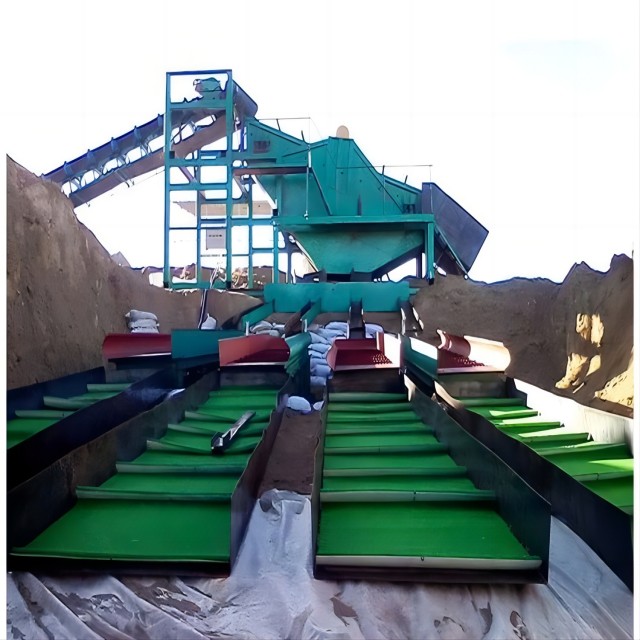Gold mining blanket, also called gold-adhering blankets, gold-panning cloths, gold-increasing grass, gold-scooping grass, etc. refer to gold-increasing and gold-increasing products made of high-density PE materials. They are widely used in water gold panning in placer gold mines and can effectively increase the gold panning rate. They are profitable products for gold panning users and are widely loved by gold panners. So what is the gold-attracting principle of gold-adhering blankets and gold panning cloths? What is the correct way to use gold mining blanket?
The gold-absorbing principle and correct way to use gold mining blanket as follows:
First, crush the placer gold ore, and the slurry (generally mineral materials with a particle size of less than 2cm) screened from the grading screen enters one or more chutes for ore selection. Control the size of the water flow, the flow rate of the water, and the angle of the chute. When the mineral material enters the chute, the water flow forms a wave vortex. Through the hydraulic action, the light sand and mud water in the ore body are continuously discharged, and the heavy mineral materials remain on the gold felt in the chute. After working for a few hours, replace the gold blanket and wash the heavy minerals on the gold blanket. In this way, the heavy mineral materials containing gold can be recycled. The quality of the gold-adhesive blanket is different, and its service life and gold recovery effect are also different.

Regular gold mining blanket is 2 cm, 2.2 cm, and the extra-strong type is 26 mm high. The extra-strong type of gold panning grass can greatly increase the gold yield, and its service life is 2-3 times that of ordinary grass. In the long run, it has a higher cost-effectiveness advantage. If economic conditions permit, it is more appropriate to choose the extra-strong type.
can not be empty
can not be empty
